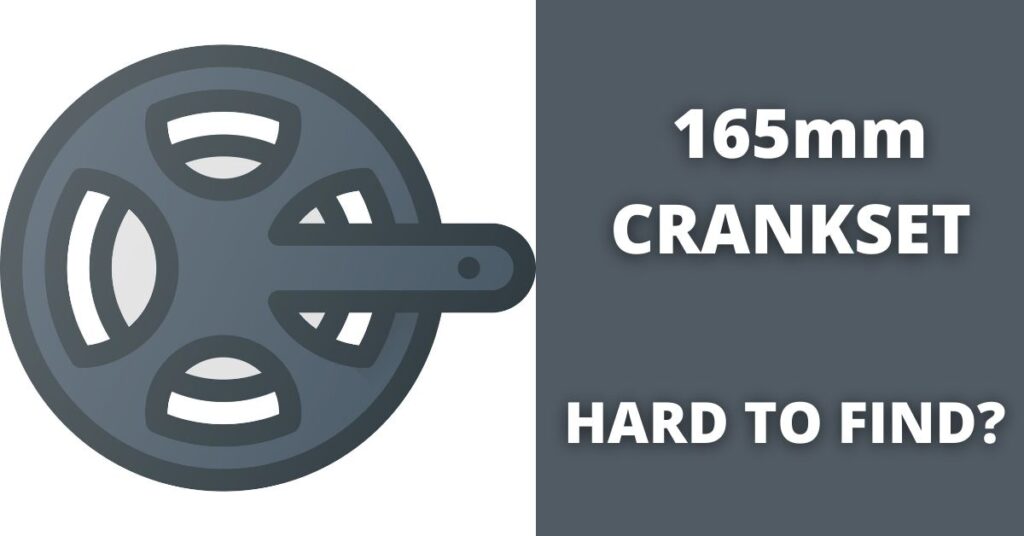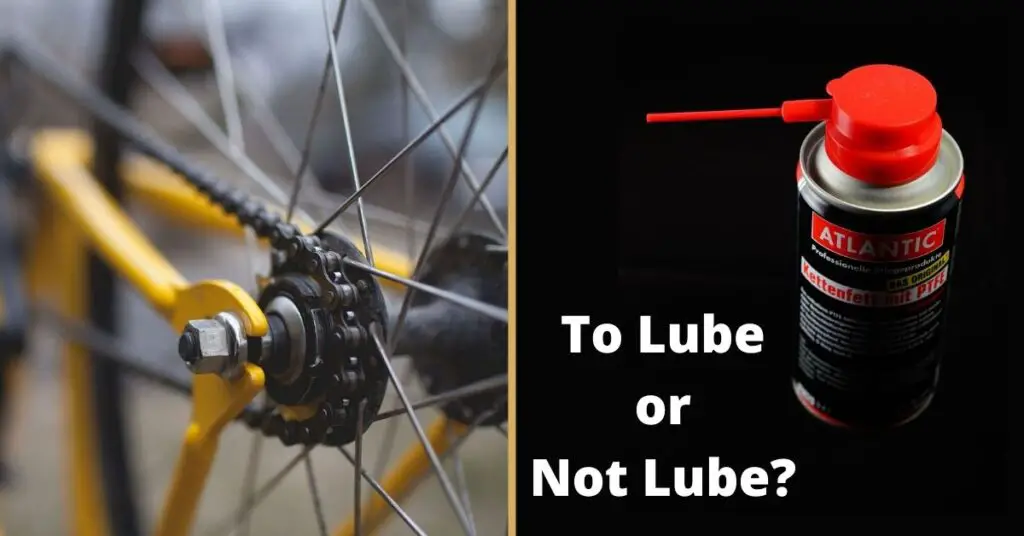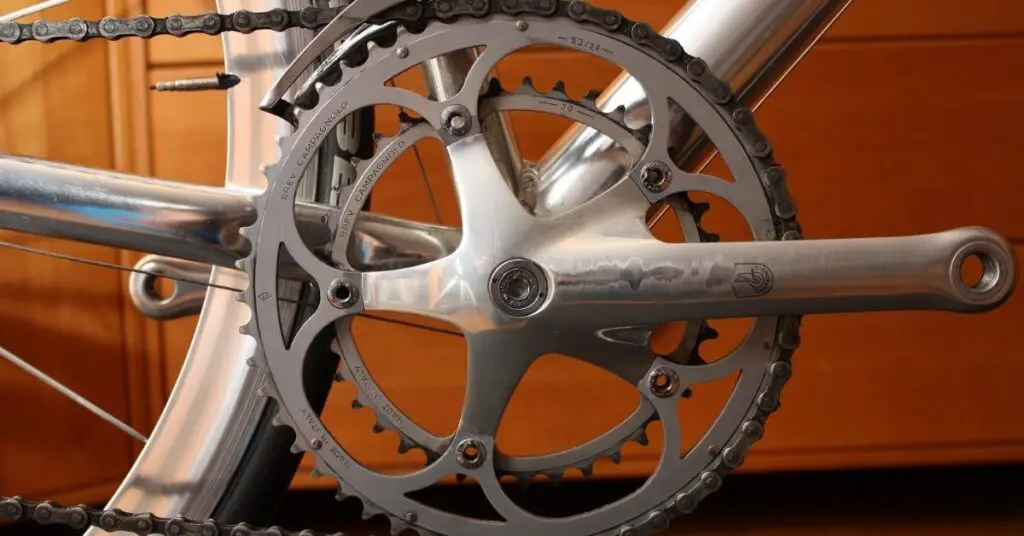For many reasons, bicycle manufacturers often use a standard size chart to decide the average human size for crank lengths. This average size is 170mm- 175mm for most cranks.
Many people consider switching to 165mm cranks because the length of a bicycle’s crank arm affects the rider’s comfortability and peddling efficiency. Choosing the right crank length can also ensure proper leverage while riding.
Crank lengths are determined by the rider’s height. The proper crank length for a rider is highly dependent on the rider’s body size.

Why Are 165mm Cranks Hard to Find? (4 Reasons)
Despite the endless controversies about the 165mm crank, a few factors such as balance, the similarity of length (with 175mm cranks), and higher demand for 175mm cranks result in the scarcity of this crank size.
It’s often surprising that most bicycle manufacturing companies manufacture their cranks between sizes 170mm and 175mm! You may ask, ‘do they think we all are at least 5ft tall?’
While it is possible to find crank lengths 165mm-180mm in the market, the crank sizes 170mm-175mm are the most common sizes you would find.
Here’s why 165mm ones are difficult to find…..
1- Anthropometrics
Most bike manufacturers use the average measurements of the male or female body to make their adult bike frames.
Most road bikes made around the common 58cm frame size have 170mm crank arms. Sizes that fall below these average measurements are then be characterized as bikes for younger adults.
The average size of an adult is 5.7”, which a crank length in the 170-175mm range is proportional to. However, crank sizes for people shorter than these are usually assembled with bikes for younger people or women in mind.
2- Similarity of Length
The difference between the 165mm and the 175mm is so little, at 3/8”, that it can go unnoticed for some riders. The difference in these 165mm and 170mm cranks is reportedly just about 3% and can be overlooked by some but not all.
This similarity in length makes the shorter cranks less priority for manufacturers compared to the longer cranks since there’s a higher population demanding the longer crank arms.
3- Efficiency
165mm cranks are rarely used on all bike types.
For instance, a major reason that you would not find 165mms on a mountain or all-terrain bike is that the rider usually needs extra control to navigate.
That means the manufacturer puts a more appropriate crank length that suits the purpose of the bicycle and is more efficient for the prospective rider.
4- Balance
Bicycle manufacturers often opt for the 170mm size range because they believe this provides a balance between the extremes of force required and the speed.
An excessively long crank puts pressure on the joints.
Should I Get 165mm Cranks?
The aim of picking the right crank length is to find perfect balance and comfortability.
The 165mm crank arms have more advantages than disadvantages. Here are pros to why you should shift to shorter cranks;
PROS
1- Shorter crank arms can be pedaled at a higher cadence on the same gear.
2- A shorter crank gives the rider a more comfortable riding experience as peddling will require less torque.
3- Shorter cranks mean the peddling process is shorter especially for a short rider. This results in a balanced saddle and less knee-flexing.
4- Shorter cranks are also helpful for competitive riders as they have to change pace fast.
5- Using a shorter crank puts you at a lesser risk of injuries to the knee. This range of crank sizes gives the joints more room to move without pressure.
6- Shorter cranks create room for flexing the torso which helps the body’s physiology positively.
7- For a more aerodynamic posture and the rider’s use of less oxygen, shorter cranks can be used by triathletes.
CONS
1- The 165mm crank is harder to turn than its longer counterpart, 170mm- 175mm.
2- This crank size has lesser leverage in comparison to longer cranks. Although crank length has an impact on the riding experience, shorter cranks do not tend to have any impact on the lever system of the bike.
3- Shorter cranks are more expensive to manage.
Differences Between 165mm & 170mm Crank?
While the 165mm and 170mm cranksets are believed to have many similarities, it is impossible to ignore their wide differences.
| 165mm | 170mm |
| Firstly, the 165mm cranks give the rider a shorter peddling cycle, that requires little to no effort for more efficiency. | A longer 170mm crank requires more force to maintain good balance and a fast pace. |
| Since the feet have to go a longer peddling cycle for long cranks, shorter cranks are more effective for competitive riders. | Longer cranks are good for riders that prefer stable terrains. |
| Shorter cranks do well on fast-paced riding with less leverage needed. | Longer cranks are better at slow paces. |
| Considering the outlook of the bicycle, shorter cranks DO NOT need a higher bottom bracket to get a balanced clearance. | Longer cranks NEED a higher bottom bracket to get a balanced clearance. |
Are Shorter Cranks Better?
Choosing a crank size is relative to the rider. It all depends on their body.
It’s a popular belief among riders that a longer crank should equate to more efficient peddling. While this claim sounds almost commonsensical, it is far from reality.
In reality, the longer crank puts more pressure on the knees with each peddling circle, causing more forceful peddling with less pace covered for the rider.
However, short cranks have been proven to be both practically and scientifically more efficient. These short sizes are comfortable to ride with. Riding short cranks does not come with the tendency of knee injuries that are known with the longer cranks.
Things to Consider When Choosing a Crankset
Before choosing a crankset, here are a few things to look out for in guiding your choice……
1- Anthropometric Values
When choosing a bike crank, you must put into consideration the standard average body measurements used by manufacturers. Anthropology majorly takes into account the height, waist, hips, weight, body mass index, and limbs.
Knowing what category you belong to on the standard measurement helps you to choose a shorter crankset for your specific body measurements.
2- Aerodynamics
A shorter crankset improves aerodynamics as it will give your back, ankle, and knee a more aligned angle.
This factor is worth watching out for in selecting a perfect crank length. Will the new length help your body to be better aligned?
3- Power Meter
A power meter accurately measures the power or torque your bicycle produces while you ride.
This lets you know if you need a switch in crank arms.
4- Leverage
Your crankset choice should not be based on a need for more leverage, because changing the crank length of a bicycle has little impact on the lever systems since the length of a crank is just another lever in the wheels, rear cassettes, and other components.
5- Comfort
Your choice of cranks should be influenced by what makes you most comfortable.
If a shorter crank that reduces knee movements is more convenient, that should be your go-to length.
Moreover, it has been proven true that shorter clanks are better for our physiology.
6- Force
Power output should be a factor in choosing the crank length. A bike with more power output has a reduced restriction in peddling.
7- Gearing
Changing your crankset to whatever length you choose will impact your bike’s gearing. This means that the bike gearing will have to be remodified to fit your new crank length.
8- Terrain
If you prefer to ride on roads or level ground, shorter cranksets are a better choice. However, if the mountain is your preferred riding terrain, you might need longer cranksets for a better riding experience.
Before changing cranksets, it is essential that you know your personal patterns and the suitable crank length for your preferred terrain. Knowing your usual terrain and style can guide your choices.
Final Thoughts!
Although choosing a crank size is relative to the rider and it significantly depends on their body, shorter crank lengths have been recommended more. They are scientifically efficient for the rider and pose more benefits than longer cranks.
In search of shorter cranksets, there is a frustration about their rarity. For the reasons mentioned above, 165mm cranks do not saturate the market as much as the 175mm family.
Cheers!




